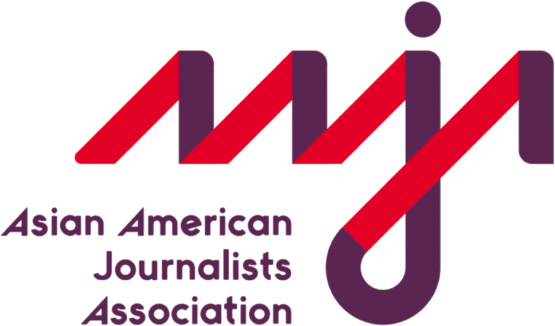Audio
Student work • Los Angeles 2022
 Melissa Li and Kit Yan took so much joy from their art that I, a fellow queer Asian American, couldn’t help but feel some of that joy as well.
Melissa Li and Kit Yan took so much joy from their art that I, a fellow queer Asian American, couldn’t help but feel some of that joy as well.
Published July 28, 2022
 Lucia Cheng
Lucia Cheng

Melissa Li and Kit Yan photographed by Joey Stocks for The Dramatist
Listen to it below:
we just watched everything everywhere all at once (we’re all asian) pic.twitter.com/tZwkPSAJLi
— Lune :ram: (@honeysaplings) May 7, 2022
A rock flies into another rock, a mother pulls her daughter out of a black hole bagel, and that daughter realizes she’ll be okay after all. The film “Everything Everywhere All at Once”, directed by Daniel Kwon and Daniel Scheinert, was praised by film critics for its innovation. Due to its popularity, theaters re-released the movie with additional footage. But the people most affected by “Everything Everywhere” were the second-generation Asian Americans who saw their family relationships reflected back at them from the big screen.
“We wanted to stretch ourselves in every direction to bridge the generational gap that often crumbles into generational trauma,” wrote the Daniels on Twitter.
Before the release of this film, Asian American artists have already been working to break through harmful stereotypes and transform the myth of the model minority. Yet, with all the historical racial injustice and family trauma, it’s hard to realize that we are not alone in our work.
Snehal Desai is the artistic director of the first Asian American theater company in the United States, the East West Players. The company was founded in 1965 and is in Little Tokyo at a former church in Los Angeles. East West Players is at the core of the Asian American Pacific Islander arts community. While dismantling the stereotypes that are thrust upon AAPI actors, the group’s mission is to also share Asian American stories with the public. Desai believes art can be a catalyst for dialogue by empowering the community through storytelling.
“I didn’t have to explain what it meant to be Asian or Asian American in America,” said Desai. “Because our audience is the community, so they understand.”
By putting art with critical mass into the public, the East West Players can host shows with topics that can be difficult to discuss, like racial disparities and LGBTQ+ issues. Their newest show, Interstate, is a pop rock, poetry musical about transgender Asian Americans figuring out to navigate the pain and joy of relationship struggles.
Desai said the play allowed AAPI children to feel like their parents saw them and to learn that they were not the only ones having these hard conversations with their families. Part of what contributed to Interstate’s intimacy was the autobiographical story of playwrights Melissa Li and Kit Yan’s two-year tour as the band Good Asian Drivers.
“Because we went on tour and a lot of times, we felt alone. We felt like two kids on the road screaming at the top of our lungs, and nobody’s listening to us,” said Yan.
Art was the medium they used to process what happened on the road. And eventually, by sharing their experiences, their world grew to include their creative team, crew members, collaborators, and audience, whom she calls the “extended Interstate family.” Seeing other artists was a reflection of their journeys and enabled them to understand their own identities.
“We wanted to pay homage to all of these young people who saw us when we were on tour, who were inspired by our work,” said Li. “A lot of young people have seen Interstate, and they’ve said, ‘Oh, I feel really reflected in this story, and that’s really healing for me and the struggles I’m going through.’”
Melissa Li and Kit Yan took so much joy from their art that I, a fellow queer Asian American, couldn’t help but feel some of that joy as well. I finally felt less alone. Li and Yan didn’t create art because of a need to be “the” Asian American story; instead, it was due to an appreciation for all the Asian American stories that haven’t been seen yet. And that’s a future I hope to see.
Lucia Cheng is a 2022 Voices Reporter. This story is edited by Naina Rao.
Lucia Cheng (she/her) is the summer Because of Her Story intern for the Smithsonian Magazine, which uplifts underrepresented voices in history. She is also an editor for The Scarlet and Black newspaper at Grinnell College.
Naina Rao is an Associate Producer for NPR’s Culture Desk, based in Detroit, Michigan.

Grinnell College
Audio





Los Angeles 2022





Apply
Become a fellow or editor
Donate
Support our impact
Partner
Work with us as a brand

The Asian American Journalists Association (AAJA) is a membership nonprofit advancing diversity in newsrooms and ensuring fair and accurate coverage of communities of color. AAJA has more than 1,500 members across the United States and Asia.